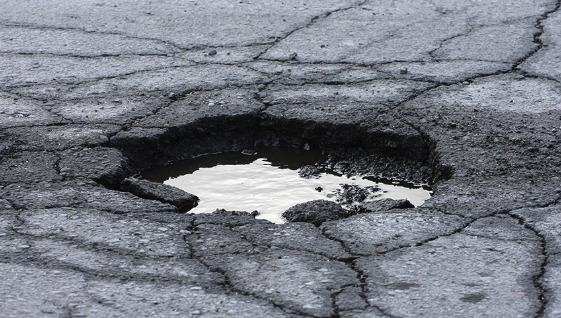What is the best method of pothole repair?

Potholes are a common and frustrating problem on roadways and pavements around the world. They not only pose risks to drivers, cyclists, and pedestrians but also lead to costly vehicle repairs and increased maintenance expenses for municipalities and property owners. Finding the best method for pothole repair is crucial to ensure safety, extend the lifespan of roadways, and minimize repair costs. In this article, we will explore various pothole repair methods, their advantages and disadvantages, and the factors that influence the choice of the most suitable method.
The Challenge of Pothole Repair
Potholes are depressions or holes in the road surface caused primarily by the expansion and contraction of water within cracks in the pavement. The freeze-thaw cycle, combined with the weight of traffic, leads to the deterioration of the asphalt or concrete surface, ultimately resulting in potholes.
Effective pothole repair is challenging for several reasons:
- Temporary Nature: Traditional pothole repairs often provide only temporary solutions. Over time, weather and traffic can cause the pothole to reappear or worsen.
- Weather Dependency: Pothole repair is often weather-dependent. Cold and wet conditions can make it challenging to apply certain repair methods effectively.
- Traffic Interruptions: Repairing potholes can cause traffic disruptions, inconveniencing commuters and businesses.
- Budget Constraints: Municipalities and property owners may have limited budgets for road maintenance, making it necessary to prioritize cost-effective solutions.
Best Methods for Pothole Repair
Several methods are commonly used for pothole repair, each with its advantages and disadvantages. The choice of method often depends on factors like the size of the pothole, weather conditions, available budget, and the desired longevity of the repair. Below are some of the best methods for pothole repair:
- Throw-and-Roll Patching:
- Description: This is one of the simplest and quickest pothole repair methods. It involves filling the pothole with hot or cold asphalt mix and then compacting it with heavy equipment, such as a truck tire, to create a temporary patch.
- Advantages: It is a cost-effective and fast solution for repairing smaller potholes. It can be done without shutting down the entire roadway.
- Disadvantages: Throw-and-roll patching is typically a temporary fix and may not provide long-lasting results. It is less effective for larger or deeper potholes.
- Infrared Asphalt Repair:
- Description: Infrared repair involves using infrared heaters to heat the existing asphalt around the pothole, making it soft and workable. Then, new asphalt is added, blended with the softened asphalt, and compacted.
- Advantages: Infrared repair creates a seamless patch that bonds well with the surrounding asphalt, reducing the chances of future potholes in the same area. It is more durable and longer-lasting compared to throw-and-roll patching.
- Disadvantages: It requires specialized equipment and trained personnel. It may not be suitable for extremely large or deep potholes.
- Pothole Patching with Cold Mix:
- Description: Cold mix asphalt is a pre-mixed combination of asphalt, aggregate, and a binding agent that can be used in cold weather. It is applied directly to the pothole without the need for heating.
- Advantages: Cold mix patching is versatile and can be applied in various weather conditions. It is relatively easy to use and is an effective solution for temporary repairs.
- Disadvantages: Cold mix patches may not adhere as well as hot mix asphalt patches, and they may not last as long. They are best suited for temporary fixes.
- Full-Depth Patching:
- Description: Full-depth patching involves removing the damaged pavement around the pothole and replacing it with new asphalt or concrete. This method is more extensive and is typically used for larger or deeper potholes.
- Advantages: Full-depth patching provides a long-lasting and durable repair that can withstand heavy traffic. It addresses the underlying issues that caused the pothole.
- Disadvantages: It is a more complex and expensive repair method that requires skilled labor and equipment. It also causes significant traffic disruptions.
- Polymer-Modified Asphalt:
- Description: Polymer-modified asphalt mixes incorporate polymer additives that enhance the properties of the asphalt, making it more resistant to cracking and deformation.
- Advantages: Polymer-modified asphalt patches are highly durable and resistant to water penetration. They offer long-lasting solutions for pothole repair.
- Disadvantages: This method may be more expensive than traditional patching methods, and specialized equipment may be required.
Factors Influencing Method Selection
Choosing the best pothole repair method depends on several key factors:
- Pothole Size: Smaller potholes can often be effectively repaired with simpler methods like throw-and-roll patching or cold mix. Larger or deeper potholes may require more extensive repairs, such as full-depth patching.
- Weather Conditions: Weather plays a significant role in the choice of repair method. Some methods, like infrared repair and hot mix asphalt, are more suitable for warm and dry conditions, while cold mix can be used in colder temperatures.
- Budget Constraints: The available budget can limit the choice of repair method. Municipalities and property owners must balance cost-effectiveness with the need for long-lasting solutions.
- Traffic Volume: The volume and type of traffic on the road also influence the choice of repair method. High-traffic areas may require more durable and long-lasting repairs.
- Longevity Requirements: Consider whether a temporary or permanent repair is needed. If longevity is crucial, investing in more durable methods like full-depth patching or polymer-modified asphalt may be justified.
Conclusion
Pothole repair is a critical aspect of road maintenance that requires careful consideration of factors such as pothole size, weather conditions, budget constraints, traffic volume, and longevity requirements. While there are various methods available, each with its advantages and disadvantages, the best method for pothole repair will depend on the specific circumstances and priorities of the project.
Efforts to improve pothole repair should also include preventive measures, such as regular pavement maintenance and inspections, to address issues before they develop into potholes. Ultimately, the goal is to ensure safe, durable, and cost-effective solutions that enhance the quality and safety of roadways and pavements for all users.
Contact us
 Phone Call |
 Text Message |
 |







